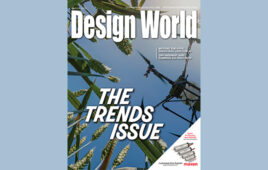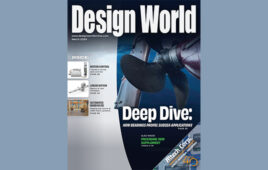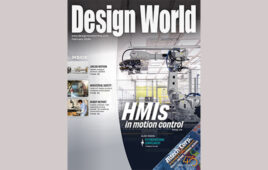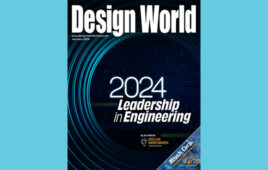In this issue:
62 LINEAR MOTION
Selecting linear actuators for valve automation
82 SENSORS
Key standards to know when specifying sensors
78 3D CAD
If you draw it, can you print it.
The hands-on engineer returns
 There’s a classic stereotype about engineers that many of them started as tinkerers, tearing apart dusty old radio sets, fixing equipment on the farm, or helping an older relative rebuild a classic car in the family garage. But I’m beginning to wonder if, in another generation or so, the stereotype will be that most engineers got their start in the Maker community.
There’s a classic stereotype about engineers that many of them started as tinkerers, tearing apart dusty old radio sets, fixing equipment on the farm, or helping an older relative rebuild a classic car in the family garage. But I’m beginning to wonder if, in another generation or so, the stereotype will be that most engineers got their start in the Maker community.
We’ve seen an interesting convergence over the past few years—a growing awareness of the need to get kids interested in STEM careers, the explosion of 3D printing technology, and hands-on programs like Dean Kamen’s FIRST robotics competition. The Maker movement seems to be at the intersection of a lot of this. Even the government has taken notice—last June, the White House hosted its first ever Maker Faire to highlight the importance of this trend.
At the Maker Faire, more than 150 U.S. colleges and universities committed to support Maker education. A recent report by these “MakeSchools” found that:
- The experience is being driven by a spirit of creativity and kids’ excitement in doing something concrete.
- Schools are putting money into incorporating Making into their curricula, as well as creating spaces on campus specifically for this activity. (See my recent Insights column on CWRU’s Sears think[box].)
- Making is a cross-disciplinary educational activity and it’s often being used to solve real-world problems.
- The Maker movement can also teach students about entrepreneurship—a needed skill in a country that is creating fewer and fewer new companies each year.
For a long time, I’ve heard older engineers fret about the next generation of college graduates. They’re too dependent on everything from handheld calculators to the Internet. Next it was mobile phones and even FEA software. The argument was that they won’t know how to get their hands dirty. They’ll be overly reliant on computers to do their thinking for them. It’s a compelling argument—and I’ll admit, the worry was starting to creep into my mind, too.
But, as the saying goes, the pendulum is swinging back, and we may have a far different future ahead. What an interesting turnabout it would be if the engineers of the next few decades turn out to be more hands-on, more intuitive and more cross-disciplinary than the previous generation of designers. I can’t wait to watch these kids innovate.
Filed Under: DIGITAL ISSUES • DESIGN WORLD





Tell Us What You Think!